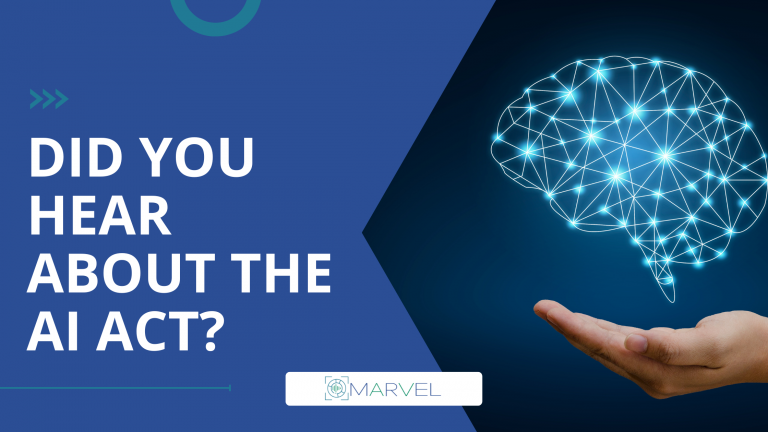Did you hear about the AI Act?
What are the main takeovers we should derive from it? Are standards a way forward or a pain?
You might be aware of the recent efforts worldwide to regulate the use of AI applications, especially the ones that pose risks to privacy. In recent years the European Commission (EC) carried out several initiatives in relation to AI. In 2018 the EC published the AI strategy Agenda[1] to ensure that AI apps follow European ethical and legal framework with the aim of boosting the uptake of AI by the EU industry. In parallel, the EC fostered the creation of the High-Level Expert Group on AI (HLEG)[2], which published a couple of reports in 2017[3] and 2018[4], the ethics guidelines for trustworthy AI[5] in 2019, and the ALTAI framework for self-assessment [6] in 2020. Other actions from the EC include the Coordinated Plan on Artificial Intelligence[7], the Communication on AI strategy[8], the White Paper on Artificial Intelligence[9], and more recently the proposal for the AI Act (AIA)[10].
In more detail, the AIA is the major element so far towards introducing new rules and legislation for trustworthy AI in Europe. After the AIA, Europe is now in pursuit of a new legislative framework for AI development of products and services. In this regard, AI standards play a major role. To this extent, the EC published in March 2022[11] their standardisation strategy towards promoting the EU values and rules, accompanied by a proposal for amending the legislation about standards to ensure the participation of national delegates and avoid undue influence in the decision makers from external actors. It is important to point out that the EU legislation will be supported using Harmonized Standards, which are standards being developed by European Standardisation Organisations (ESOs) over formal requests issued by the EC. These harmonized standards are not legislation per se but support the legislation and will be in most cases mandatory. The standards will include specifications, methods, and a framework for AI products and service developers to achieve regulatory compliance. An in-depth analysis of the standardisation landscape in Europe can be found in the AI Watch document[12].
The main ESOs for harmonised standards in Europe are CEN/CENELEC, and more in particular the technical committee JTC 21[13], and ETSI (check for instance the White Paper No. #34[14] on AI and the future directions).
Keep an eye on harmonised European Standards, as they will play a key role in the implementation of AI products and services in line with European values and legislative framework.
References
[1] https://eur-lex.europa.eu/legal-content/EN/TXT/PDF/?uri=CELEX:52018DC0237&from=EN
[2] https://finance.ec.europa.eu/publications/high-level-expert-group-sustainable-finance-hleg_en
[3] https://finance.ec.europa.eu/document/download/7f8b937b-10ee-4d71-9f2b-6263e0c26676_en?filename=170713-sustainable-finance-report_en.pdf
[4]https://finance.ec.europa.eu/document/download/2e65cb1e-bd47-4441-816a-d89ec61eef45_en?filename=180131-sustainable-finance-final-report_en.pdf
[5] https://digital-strategy.ec.europa.eu/en/library/ethics-guidelines-trustworthy-ai
[6] https://digital-strategy.ec.europa.eu/en/library/assessment-list-trustworthy-artificial-intelligence-altai-self-assessment
[7] https://digital-strategy.ec.europa.eu/en/policies/plan-ai
[8] https://eur-lex.europa.eu/legal-content/EN/TXT/HTML/?uri=CELEX:52018DC0237&from=EN
[9] https://ec.europa.eu/info/sites/default/files/commission-white-paper-artificial-intelligence-feb2020_en.pdf
[10] https://artificialintelligenceact.eu/
[11] https://ec.europa.eu/commission/presscorner/detail/en/ip_22_661
[12] https://publications.jrc.ec.europa.eu/repository/handle/JRC125952
[13] https://www.cencenelec.eu/areas-of-work/cen-cenelec-topics/artificial-intelligence/
[14] https://www.etsi.org/images/files/ETSIWhitePapers/etsi_wp34_Artificial_Intellignce_and_future_directions_for_ETSI.pdf
Blog signed by: ATOS team
Menu
- Home
- About
- Experimentation
- Knowledge Hub
- ContactResults
- News & Events
- Contact
Funding

This project has received funding from the European Union’s Horizon 2020 Research and Innovation program under grant agreement No 957337. The website reflects only the view of the author(s) and the Commission is not responsible for any use that may be made of the information it contains.



